Crew 66 – Assigned 755th Squadron – November 20, 1943
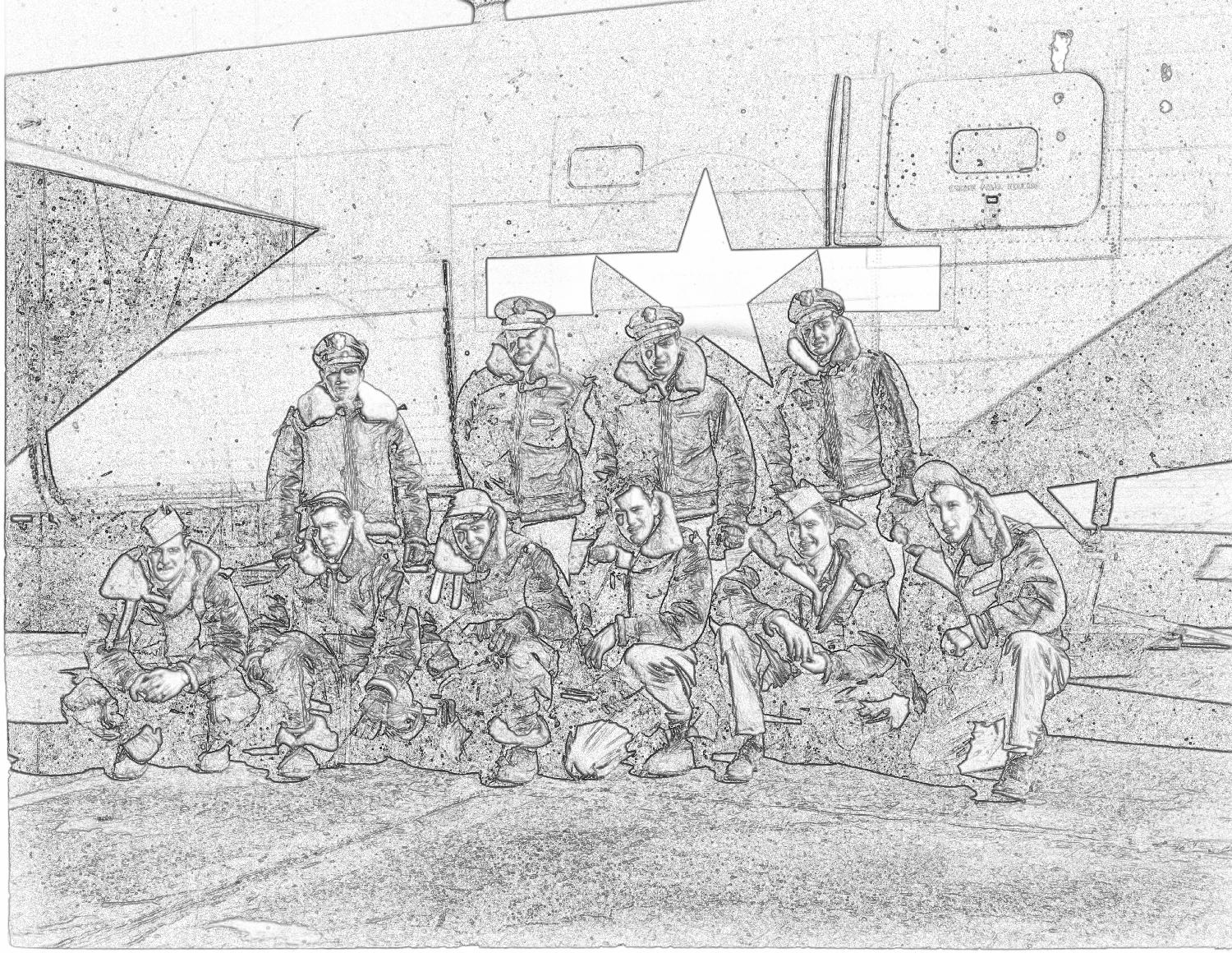
Shot down March 8, 1944 – MACR 3345
| Rank | Name | Serial # | Crew Position | Date | Status | Comments |
|---|---|---|---|---|---|---|
| 2Lt | John D Adamson | 0739644 | Pilot | 08-Mar-44 | KIA | Ventura, CA |
| 2Lt | John J Berrio | 0810994 | Co-pilot | 08-Mar-44 | POW | Stalag Luft I |
| 2Lt | Jesse H Lack | 0694889 | Navigator | 08-Mar-44 | KIA | Kings County, NY |
| F/O | Charles S Daskam | T122613 | Bombardier | 08-Mar-44 | KIA | Howard County, IA |
| T/Sgt | Jake J Tamburello | 6663411 | Radio Operator | 08-Mar-44 | POW | Stalag Luft IV |
| S/Sgt | Elmer P Moe | 19146147 | Engineer | 08-Mar-44 | POW | Stalag Luft IV |
| Sgt | Harold C Rabideau | 12035261 | Ball Turret Gunner | 08-Mar-44 | POW | Stalag Luft IV |
| Sgt | Willard L Lowman | 14092318 | Waist Gunner | 08-Mar-44 | KIA | Ardennes American Cemetery |
| Sgt | Henry J Forbes | 36441369 | Waist Gunner | 08-Mar-44 | POW | Stalag Luft IV |
| Sgt | Billy L Freeman | 38269498 | Tail Gunner | 08-Mar-44 | KIA | Jackson County, OK |
The Adamson crew trained with the group in Tonopah, Nevada in the fall of 1943 and proceeded to England in January 1944. Unlike the majority of the aircrews, Adamson and his crew were sent from Morrison Field in Florida to New York, reporting to the North Atlantic Wing ATC. From there they traveled via the North Atlantic Ferry Route with several other 458th air and ground personnel.
The crew was shot down on their first combat mission, the 8AF’s second raid on Berlin.
————————-
MACR 3345
No statement given.
Missions
| DATE | TARGET | 458th Msn # | Pilot Msn# | Serial | RCL | Sqdn | A/C Msn# | A/C Name | Comments |
|---|---|---|---|---|---|---|---|---|---|
| 25-Feb-44 | DUTCH COAST | D2 | -- | 41-28719 | -- | J3 | D2 | PADDLEFOOT | Diversion Mission |
| 08-Mar-44 | BERLIN/ERKNER | 5 | FTR | 41-28720 | N | J3 | 4 | UNKNOWN 004 | FLAK and FIGHTERS |
Crew statements from MACR 3345
2Lt John J. Berrio – Co-pilot
“We were hit by flak near Hannover. The oil pressure on No. 4 engine began to drop. Near Berlin the turbo on No. 2 engine went out and we were forced to salvo our bomb load. As we were leaving the formation, I called Lt. Lack and asked for a course back to England. He gave me a course. I heard him talk to F/O Daskam. I called later while we were under attack, but they never answered. Fighter protection was called for, but never came. The enemy fighters (ME-210’s I believe) picked us up and made numerous attacks to our tail and waist [areas]. When the plane caught fire, Lt. Adamson told me to give the order to bail out. When I left the plane, Lt. Adamson was standing with his parachute on. The plane crashed about 200 feet from where I landed and there was one ‘chute wrapped around the tail. The crash took place on the outskirts of Finsterwalde, Germany. According to Sgt Forbes, Sgt Freeman was hit in the first attack.”

S/Sgt Elmer P. Moe – Engineer/Top Turret Gunner
The following is in reply to P.S. on letter I received today concerning information I gave to the family of Jesse H. Lack. May vary slightly as this is from memory only. Last July I received a letter from Mr. Henry Lack in which he stated that he had received rumors that his son was still alive and asked if I could help him get straightened out on the events that took place so he could have a little more to work on.
Here is the bulk of my reply:
“I am sorry to hear you are still in doubt as to your son’s fate and this is to prevent you from holding any false hopes. I too had some hope that your son was okay, but have given it up as we would surely have heard for sure by now. I did not tell this before as we had orders it would add to the confusion, etc. Also that you would be properly notified by War Dept. and I have given them several written reports on this. Therefore this is meant only for your information and not to be repeated as it may add to trouble and confusion.
“On March 8 our target was Berlin. Your son was in the navigator’s compartment in the nose and the bombardier was in the nose turret. They could not be seen by any other of the crew and their only means of communication was by interphone. Bailout signal was to be given over interphone and by alarm bells located at the various plane compartments one bell being near your son. We went through scattered flak and one supercharger went out which cut our power from one engine and near the target the oil pressure on another went out. We could not keep altitude and so decided to hit the deck where we would get more power from the engine with the turbo out and try to make it home. The pilot called for a compass heading, got it and soon we were jumped by fighters. One made a pass, or rather three passes at us from the rear knocking out tail turret and left waist gun. On last pass, after tail and left waist guns were quiet, he got in close and gave us about a three second burst that set us on fire and must have put several hundred holes in our plane. All this time he was too low for me to get a shot at but believe ball gunner at least hit him.
“My gun-sight went out as I switched to other filament and took a shot at him as he pulled up to our left, but he turned away and by this time gasoline was burning from a large hole in our left wing, our interphone was out and the radio operator was getting up and motioned down and so I snapped on my chute and followed him out as the co-pilot was right behind me. To get to your son, one of us would have had to crawl on hands and knees and then may have hindered their exit as they had an escape hatch in the nose too. In this case there was absolutely no time as I hit the ground before my chute had fully slowed me up. I was captured even before I got my chute off and the Germans would not let us any nearer the plane. As the country was quite thickly settled there was little chance anyone got away and if they were picked up I am quite sure they would have come to the same place as we were. Or if they were injured, they would have gone to hospital and you would have heard through the Red Cross. If they did not get out of the plane they must have met death instantly. Surely if your son was alive, he would be home now or have let you know where he is.
“That is about all I know that could clear up any false rumors you may have heard. I think he did not get out in time. The plane was below 1,000 feet when I bailed out and crashed nearby. There was one parachute wrapped around the tail, but I was unable to investigate as I was taken prisoner immediately by the Germans, and they would not permit me to go to the plane. I presumed the chute to be that of Lt. Adamson.
“The plane was burning badly while in the air, but it was extinguished when it crashed.”
T/Sgt Jake J. Tamburello – Radio Operator
“When I was captured I was taken to the point where our craft hit the ground. I saw a parachute entangled around the left horizontal and vertical stabilizer. It seemed as though this chute had been opened too soon and the wearer apparently carried down with falling aircraft. I was informed by the Germans that four of my crew members were dead in the aircraft. (This was when we were at the scene of the crash). They also told me one member was taken to a hospital. Later that evening, while in prison at Fensterwalde Air Base (sounded like a twin engine base to me from aircraft engines) the Germans informed us (four other crew members and I) that the man taken to the hospital had died. Having limited speaking knowledge of the German language I was able to learn that the above mentioned town was approximately twenty kilometers northeast of Berlin. I recall no other information, either facts or hearsay.”
1Lt John D. Adamson

John D. Adamson – Aviation Cadet
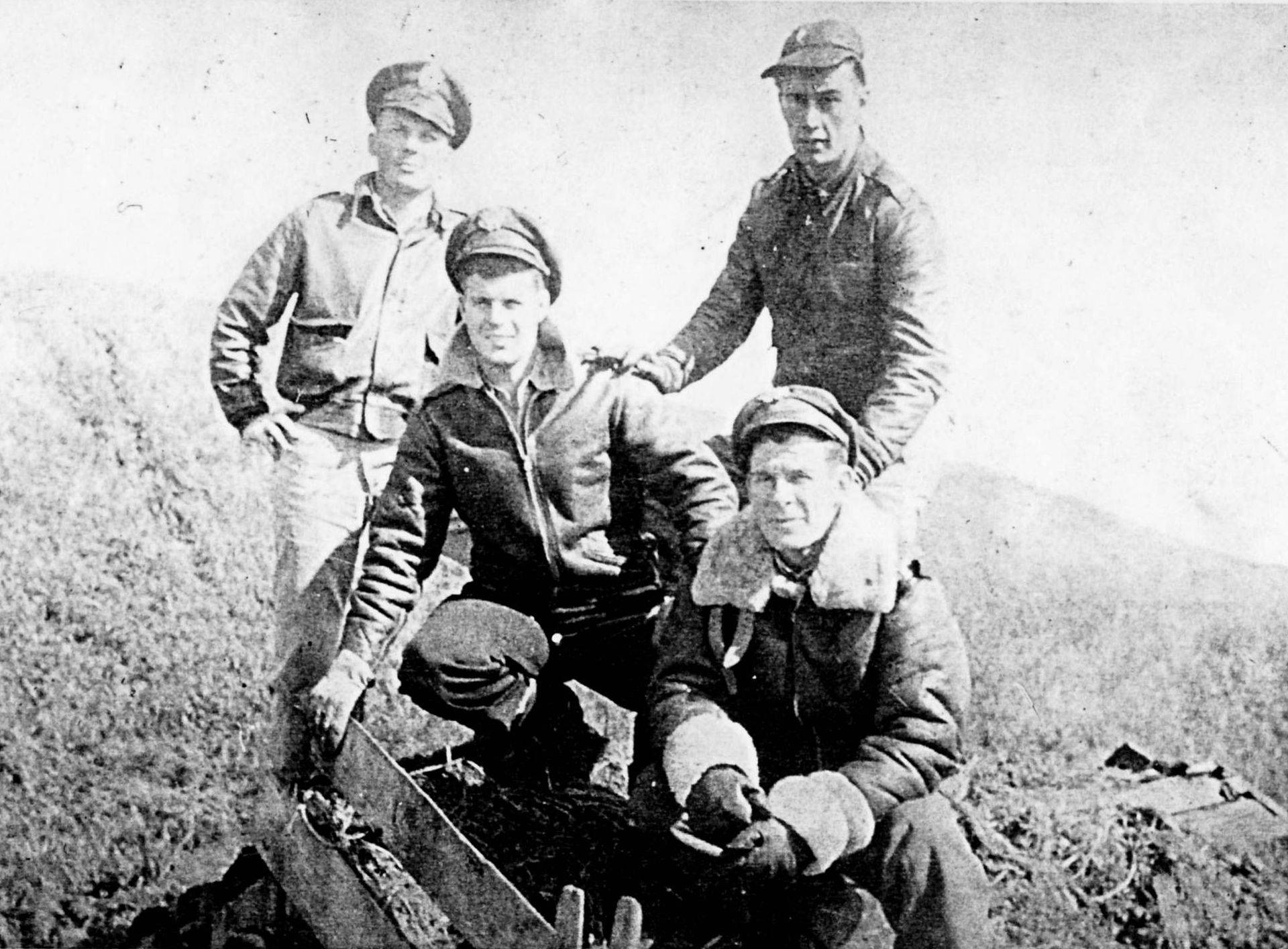
These are most likely the officers of Crew 66. John Adamson is 2nd from left.
(Photos: Chris Adamson)
Sgt Willard L. Lowman
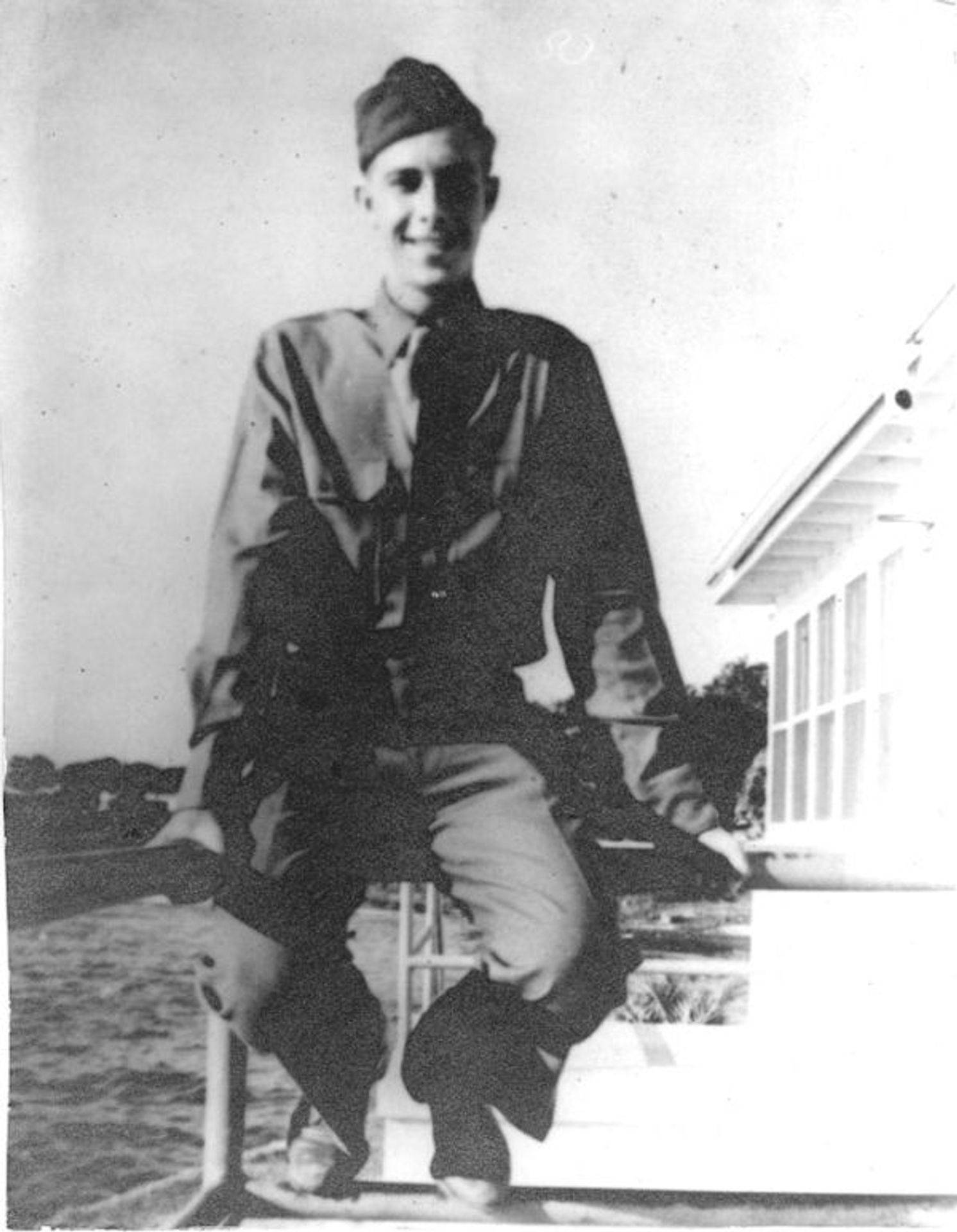
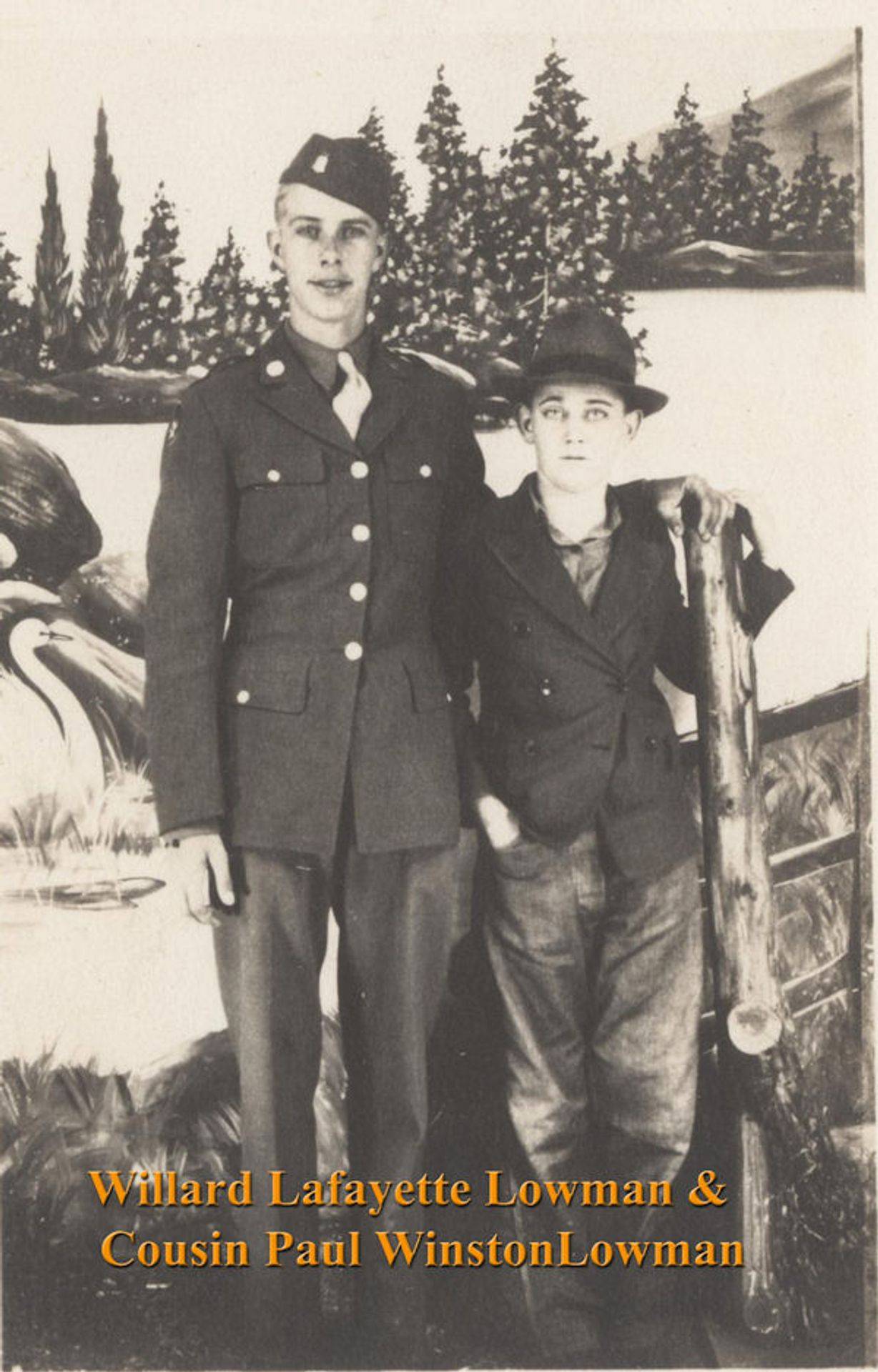
Photos courtesy: Fields of Honor Database via the Lowman Family
F/O Charles S. Daskam – Bombardier
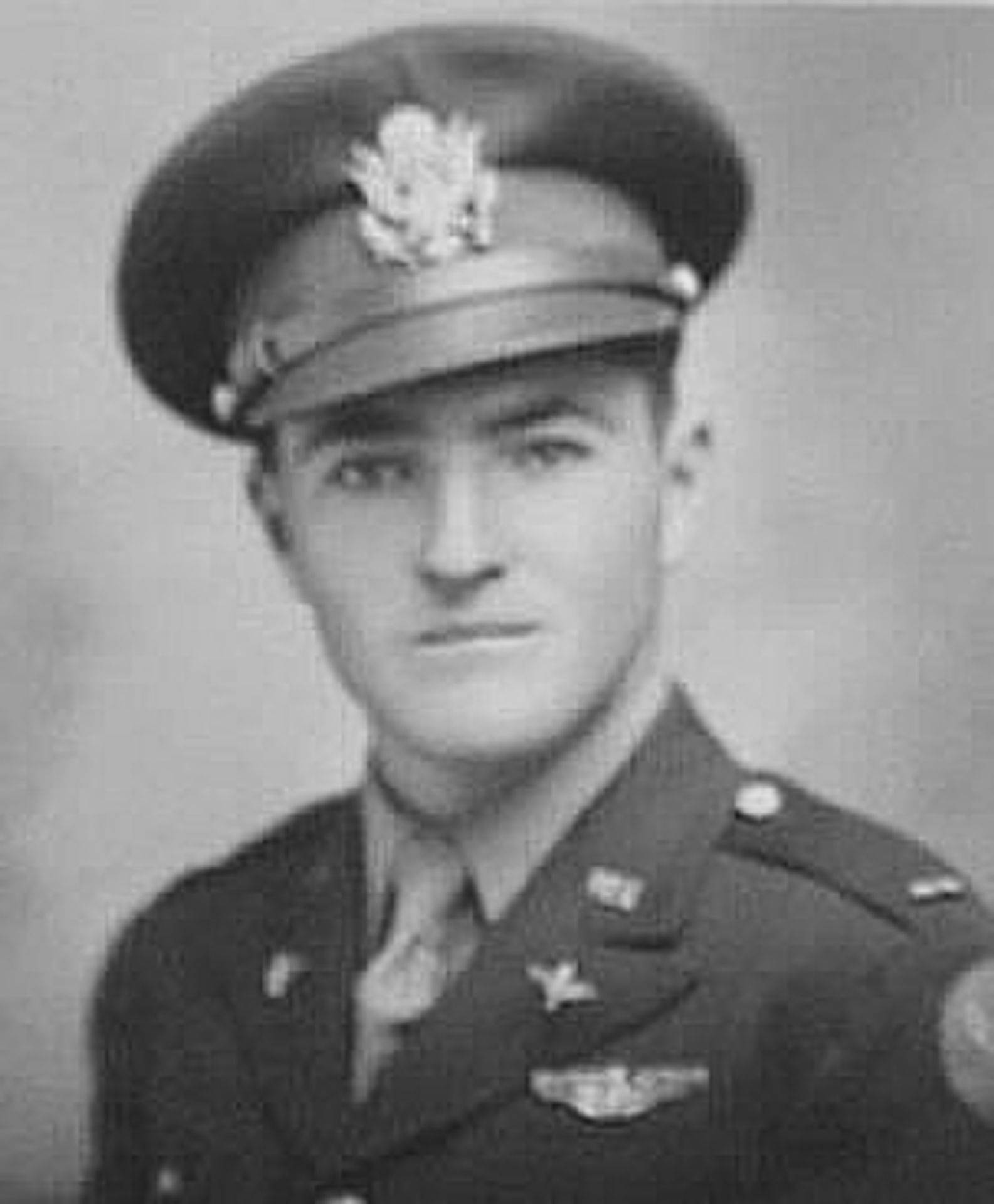
Photo Courtesy: Charles D Taylor
Sgt Harold C. Rabideau – Gunner
Veteran oral history interview published by the New York State Military Museum. The State of New York, the Division of Military and Naval Affairs and the New York State Military Museum are not responsible for the content, accuracy, opinions or manner of expression of the veterans whose historical interviews are presented in this video. The opinions expressed by those interviewed are theirs alone and not those of the State of New York.
